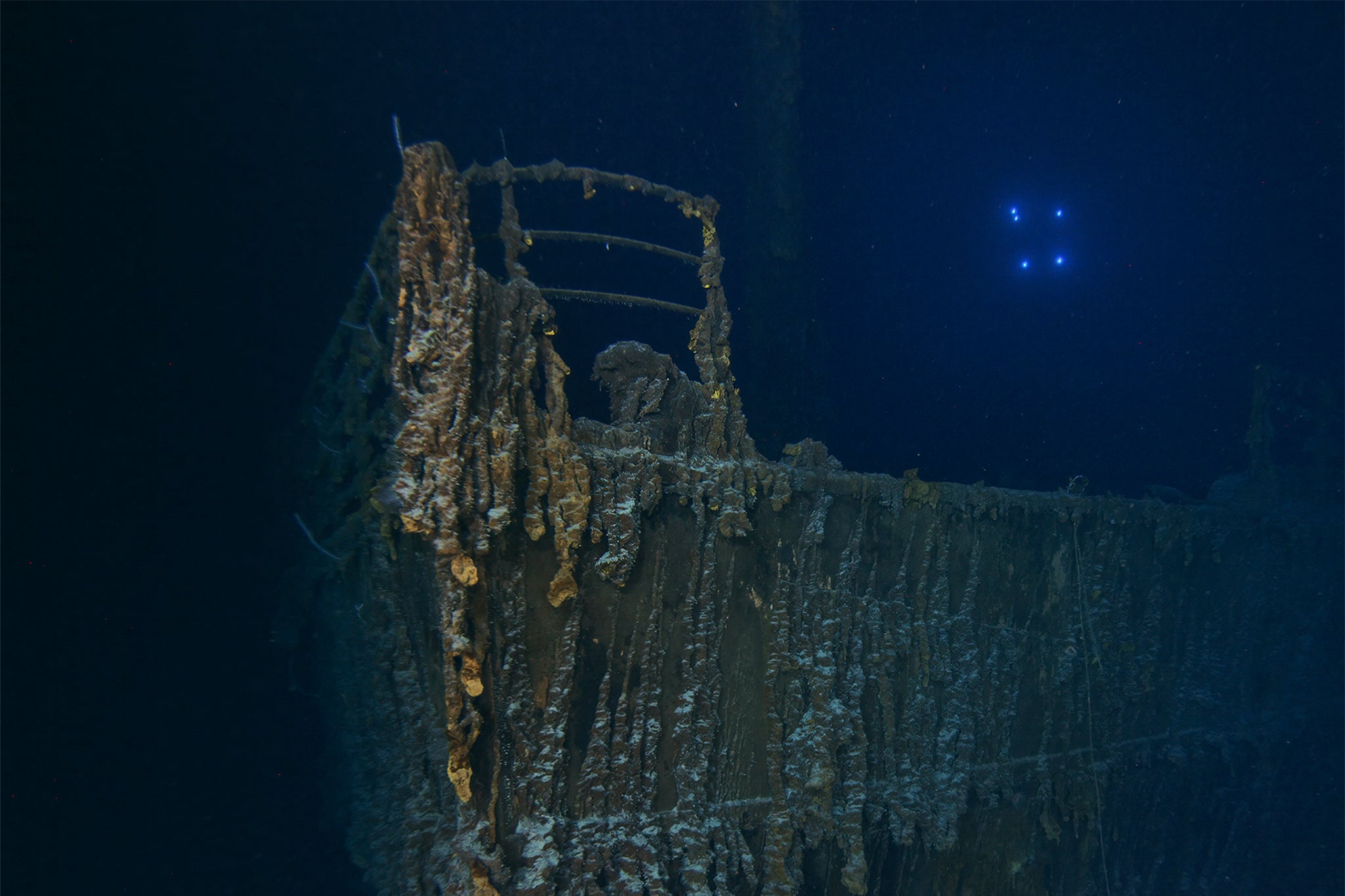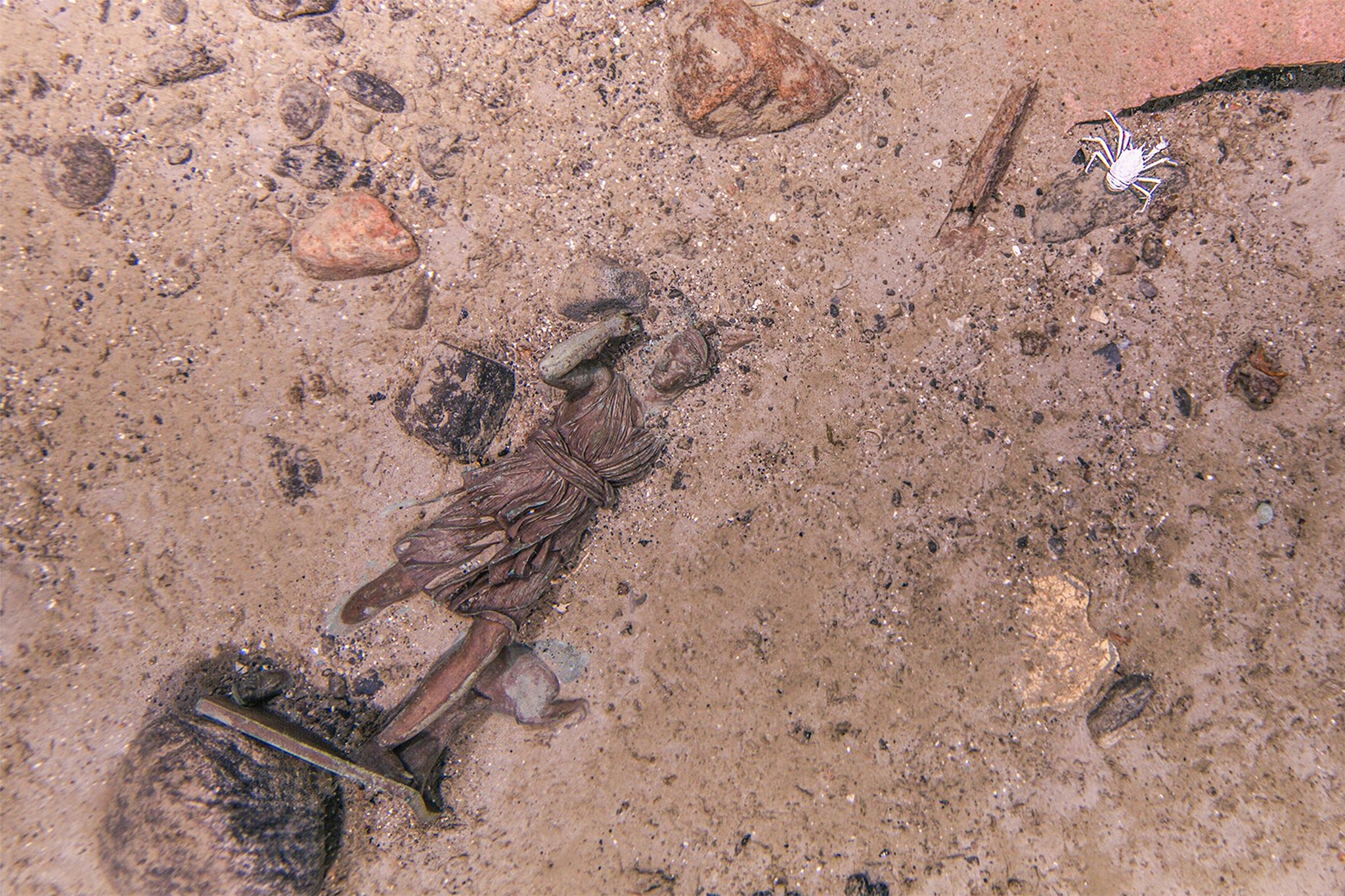Titanic’s bow disappearing into the sea as startling new images reveal doomed ship’s slow decay
The famous bow of the ship is disappearing.
Your support helps us to tell the story
From reproductive rights to climate change to Big Tech, The Independent is on the ground when the story is developing. Whether it's investigating the financials of Elon Musk's pro-Trump PAC or producing our latest documentary, 'The A Word', which shines a light on the American women fighting for reproductive rights, we know how important it is to parse out the facts from the messaging.
At such a critical moment in US history, we need reporters on the ground. Your donation allows us to keep sending journalists to speak to both sides of the story.
The Independent is trusted by Americans across the entire political spectrum. And unlike many other quality news outlets, we choose not to lock Americans out of our reporting and analysis with paywalls. We believe quality journalism should be available to everyone, paid for by those who can afford it.
Your support makes all the difference.A new expedition to the Titanic has shed new light on the slow decay of the most famous shipwreck in history.
The ghostly bow, famously reimagined by James Cameron’s 1997 blockbuster retelling of the disaster, has now lost a large part of its railing.
Titanic, then the largest and grandest liner in the world, sank after hitting an iceberg on its maiden voyage from Southampton to New York in April 1912.
Widely described as being “unsinkable” because of technological innovations, the ship did not have enough lifeboats for all onboard, and more than 1,500 men, women and children lost their lives in one of the most deadly maritime disasters in history.
The wreck lay undiscovered for 73 years after it sank beneath the waves of the North Atlantic until it was located by a French–American expedition led by Jean-Louis Michel and Robert Ballard in 1985.
Since then, many expeditions have taken place, including last summer’s Titan submersible disaster, and questions have been raised about the ethics of visiting what is also a gravesite.
Tomasina Ray, director of collections at RMS Titanic Inc, said of the dramatic change: “The bow of Titanic is just iconic. You have all these moments in pop culture – and that’s what you think of when you think of the shipwreck. And it doesn’t look like that anymore.
“It’s just another reminder of the deterioration that’s happening every day. People ask all the time: ‘How long is Titanic going to be there?’ We just don’t know but we’re watching it in real time.”
“At some point the metal gave way and it fell away.”

However, a group of descendants of the victims has claimed that the change is not as drastic as it appears to be.
“While RMSTI call this a ‘drastic change’, it’s merely superficial,” claims Titanic Memorial Lighthouse. “Both port and starboard railings were removable to allow for the main deck anchor to be deployed by the crane.
They added: “It remains to be seen if it was in fact dislodged by propeller wash from their own submersible.”
This summer’s expedition – the first since Titan – was carried out by RMS Titanic Inc, an American company who own exclusive salvage rights to the wreck.
The company stresses that its purpose is to preserve the ship’s legacy through research and the recovery of artefacts.
RMS Titanic Inc have conducted several expeditions to the wreck, and their recent mission saw them complete the most ever detailed 3D imaging scan of the site.
Although the mission did not recover any artefacts this summer, it did aim to identify objects of historical importance for future recovery.
This part of the search proved particularly fruitful, and a statue from the first class longue that was ripped apart during the sinking was discovered on the seabed.
The Diana of Versailles was previously found in 1986 but has not been seen since then.
Titanic researcher James Penca said: “It was like finding a needle in a haystack, and to rediscover this year was momentous.
“The first-class lounge was the most beautiful, and unbelievably detailed, room on the ship. And the centrepiece of that room was the Diana of Versailles.
“But unfortunately, when Titanic split in two during the sinking, the lounge got ripped open. And in the chaos and the destruction, Diana got ripped off her mantle, and she landed in the darkness of the debris field.”

Mr Penca believes that the discovery of the statue proves why the site should continue to be explored.
“This rediscovery of the Diana statue is the perfect argument against leaving Titanic alone,” Mr Penca said.
“This was a piece of art that was meant to be viewed and appreciated. And now that beautiful piece of art is on the ocean floor... in pitch black darkness, where she has been for 112 years.
“To bring Diana back so people can see her with their own eyes – the value in that, to spark a love of history, of diving, of conservation, of shipwrecks, of sculpture, I could never leave that on the ocean floor.”
The ethics of the continued exploration of the site came to the fore of the public consciousness last summer when a commercial $250,000-a-head visit to the wreck claimed the lives of five men.
This summer’s expedition, however, was not carried out by manned submersibles but remotely operated vehicles (ROVs).
The Independent has reached out to RMS Titanic Inc for comment.

Join our commenting forum
Join thought-provoking conversations, follow other Independent readers and see their replies
Comments